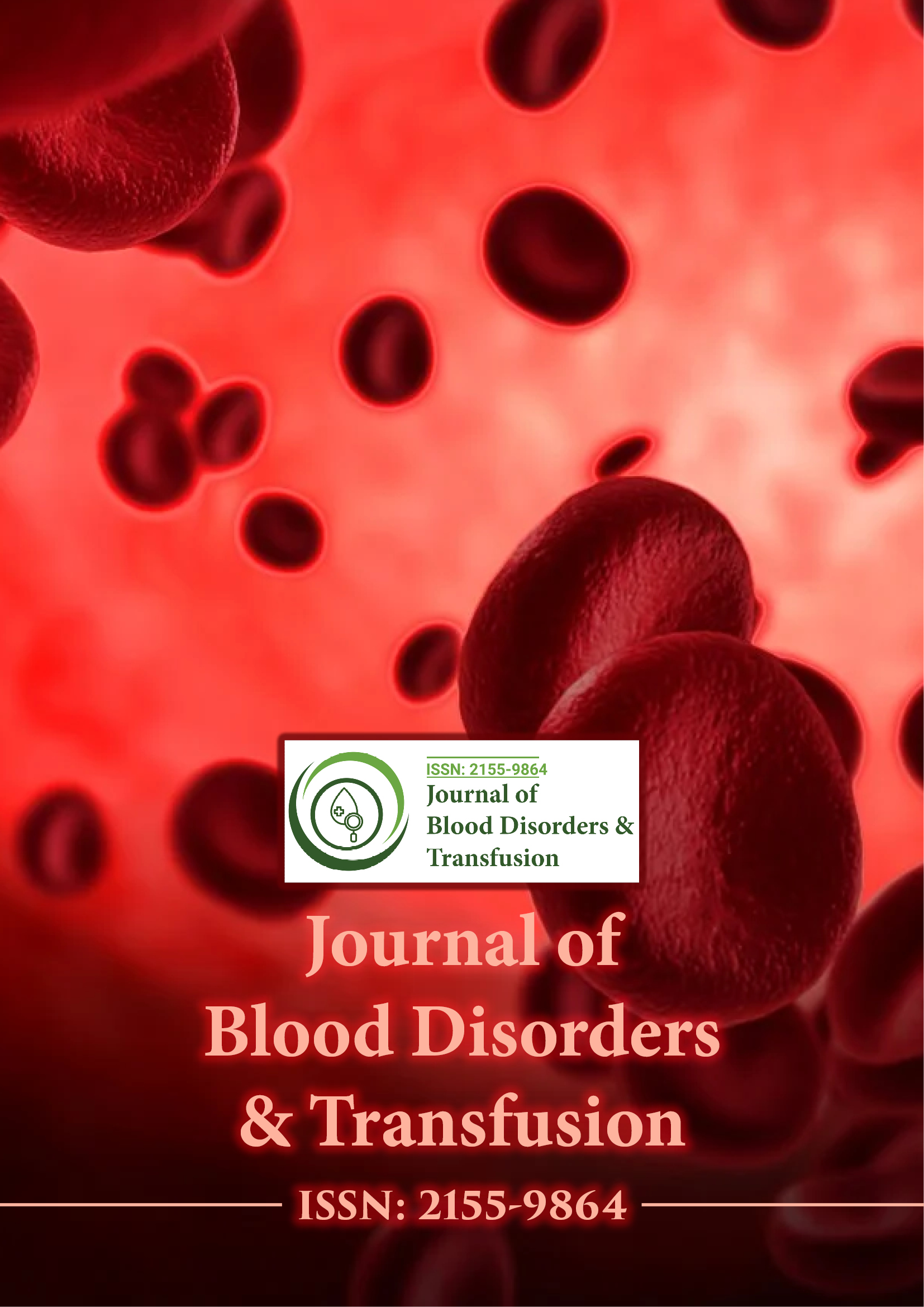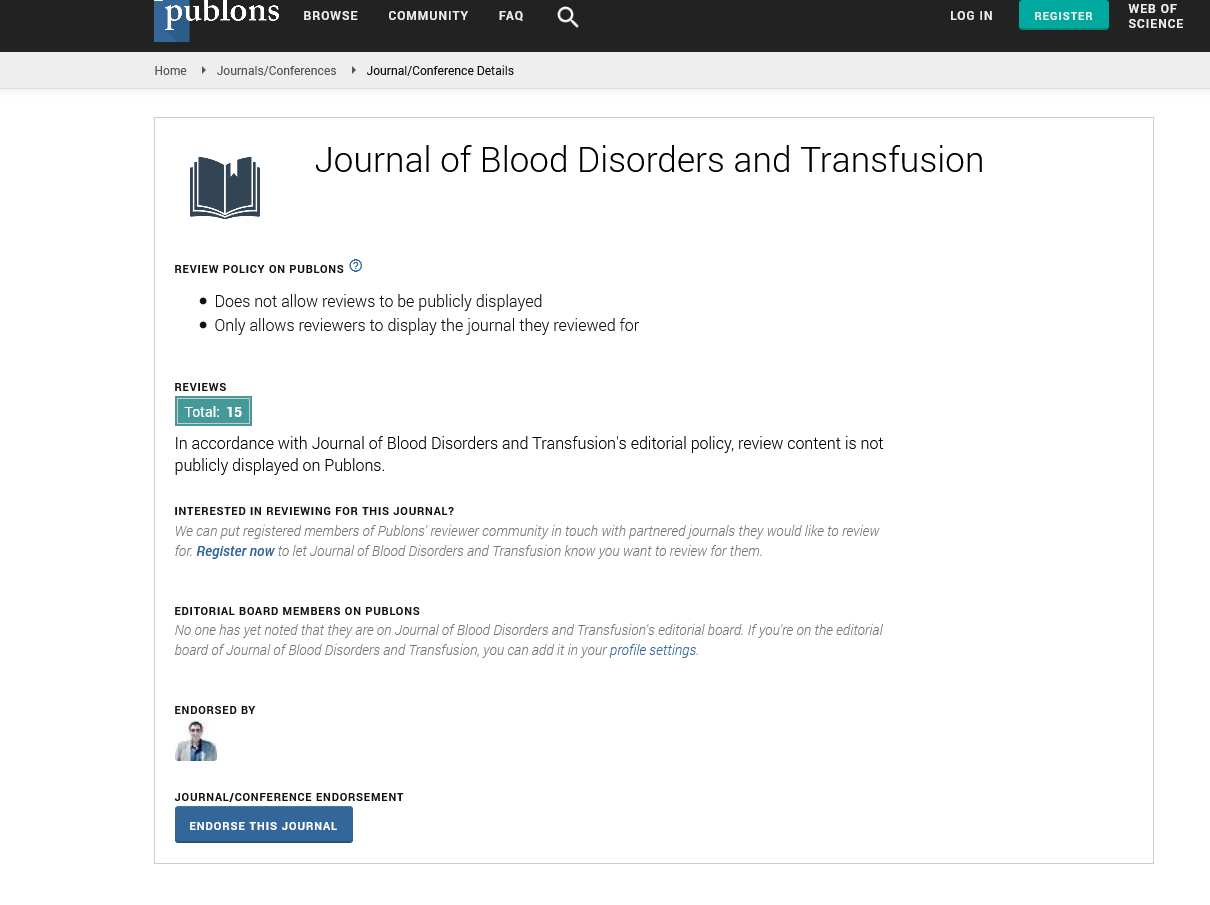PMC/PubMed Indexed Articles
Indexed In
- Open J Gate
- Genamics JournalSeek
- JournalTOCs
- Ulrich's Periodicals Directory
- RefSeek
- Hamdard University
- EBSCO A-Z
- OCLC- WorldCat
- Proquest Summons
- Publons
- Geneva Foundation for Medical Education and Research
- Euro Pub
- Google Scholar
Useful Links
Share This Page
Journal Flyer

Open Access Journals
- Agri and Aquaculture
- Biochemistry
- Bioinformatics & Systems Biology
- Business & Management
- Chemistry
- Clinical Sciences
- Engineering
- Food & Nutrition
- General Science
- Genetics & Molecular Biology
- Immunology & Microbiology
- Medical Sciences
- Neuroscience & Psychology
- Nursing & Health Care
- Pharmaceutical Sciences
The correlates of novel cardiovascular predictive biomarker: Hyperhomocysteinemia
2nd International Conference on Hematology & Blood Disorders
September 29-October 01, 2014 DoubleTree by Hilton Baltimore-BWI Airport, USA
Mohamad A Ayass and Gul Nowshad
Scientific Tracks Abstracts: J Blood Disorders Transf
Abstract:
Introduction: Hyperhomocysteinemia is characterized by abnormally high levels of Homocysteine andare seen in5% to 12% of the general population. In alcoholics and chronic kidney diseasepatients, this condition is more common. Elevated Homocysteine irritates the lining of the blood vessels and increased the risk of thrombus formation, by causing them to become scarred, hardened, and furry. After adjusting for conventional risk factors, Homocystein level besides three other novel biomarkers, most strongly predicted the risk of death in an analysis from the Framingham Heart Study. Purpose: The aim of thestudy was to delineate the factors associated withhyperhomocysteinemiain adult population. Methods: Four hundred patients seeking health care in amedical clinic were included in the study. For each patient, socio-demographic, laboratory and clinical information about co-morbid conditions (OSA, hypertension and diabetes, cardiac diseases)were obtained.Logistic models with forward selection methods were employed and the outcome variable wasHomocysteine>12 μmol/L. Result: Sixty six patients (16.5%) with hyperhomocysteinemiawere mostly older, females, nonsmoker, and obese. However, multivariate analysis indicated that high factorVIII(OR 2.59, P=0.001), D-dimer(OR 1.69, P=0.007), impaired diffusing capacity of the lung for carbon monoxide DLC0, (OR 2.04, P=0.017), were the only determinants of hyperhomocysteinemiaafter controlling for demographic and comorbid condition. Conclusions: High factorVIII, high D-dimer?s association with hyperhomocysteinemia raises the query that may be these thrombotic risk factors increase the risk of thrombosis through hyperhomocysteinemia.Identification of novel biomarkers forprediction of thromboembolic eventswill be the hallmark of risk identification, early detection and prevention.
Biography :
Mohamad AmmarAyass received his medical degree (MD) degree from Damascus University College of Medicine in 1988. He received his board certificate in internal medicine in 2001, and his board certificate in pulmonary diseases in 2003. He has been practicing medicine for almost 15 years. He is the founder of Ayass Lung Clinic & Sleep Center, a specialized pulmonary care service organization. He believes in improving quality of care and outcome of patients. He is very passionate about medical discoveries and has published five abstracts regarding lung diseases and sleep disorders. He is a patient advocate and has been actively involved in patient education and community health awareness in Texas.

